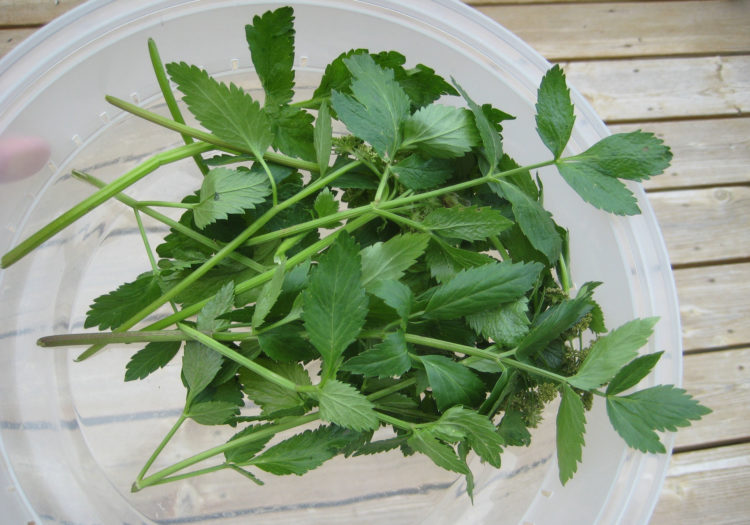
How many times have I hiked the same route never to discover angelica? Probably more than a hundred. Of course, this is very much in keeping with what I have come to expect from wild plants—I almost always find something good when I’m out foraging, but it’s often not what I set out to find.
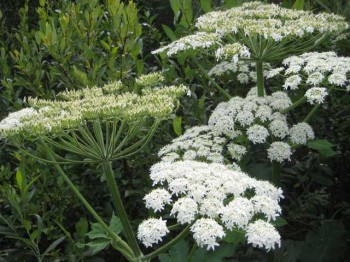
“Cow parsnip is related to angelica, no?” a friend commented at the end of one of my cow parsnip rants a few months ago, where I plotted the candying of cow parsnip stalks. “And I believe candied angelica was a thing back in the day.”
Indeed, garden angelica (Angelica archangelica) has a long history of use, but there are many wild species in the eastern and western United States as well–approximately 60 total. Some are considered endangered or threatened on the margins of their range, particularly in the eastern US, so check the USDA listing for angelica before foraging those. Similarly, if a wild population is small, it is best to steer clear whether or not the species is considered endangered.
It turns out foragers have been making candied angelica with wild angelica too, for I found a recipe in a 1974 cookbook (Krockmal and Krockmal) using a different species not found in these parts, the taller Angelica atropurpurea. Shortly thereafter, I was hiking in what I like to call “the secret meadow” at the end of a hidden footpath off one of our usual routes here in Colorado, when I spied what I thought was angelica.
Not an Identification to be Taken Lightly
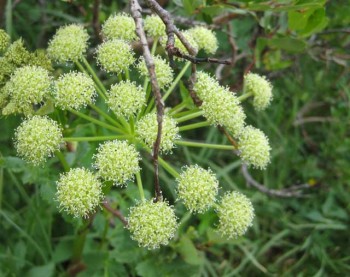
Angelica and cow parsnip are related, as both are members of the Umbelliferae family. The angelica plant is reminiscent of cow parsnip in its scale and in the large, thick flower stems emerging mightily from its leaves in summer. All Umbelliferae family members produce umbels, which are umbrella-like flower clusters where all of the floret stalks radiate from a single point. Angelicas differ from cow parsnip, however, in that their leaves are made up of many leaflets, to cow parsnip’s three (occasionally two) large leaflets.
The Umbelliferae family includes many cultivated vegetables—parsnip, carrots, parsley, dill, coriander, fennel and anise, to name a few—but it also has some poisonous family members too. The angelicas could be confused with water hemlock (Cicuta douglasii), which is not only poisonous but also deadly poisonous. Compounding matters, angelica enjoys moist habitats, as does water hemlock.
There is also a passing resemblance to poison hemlock (Conium maculatum), although this plant produces significantly smaller and more numerous umbels and often has purple-blotched stems with a white bloom that can be rubbed off. Poison hemlock also has much more finely divided leaflets such that the foliage looks carrot-like, compared to the wider leaflets of the angelicas.
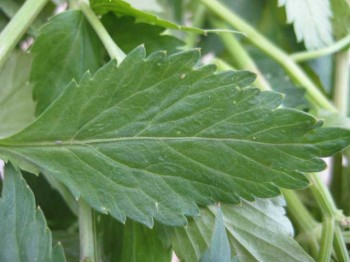
But suffice it to say that this is absolutely, definitely one plant to know before you try it—because mistaking the hemlocks for angelica could be a deadly mistake.
One clue as to whether or not you have angelica is the leaflet veins. “The leaf edges of angelica are serrate and pinnately divided into opposing pairs, like water hemlock, except that the leaf veins extend from the midribs to the outer tips of the serrations,” writes Tilford (1997). In contrast, water hemlock’s veins generally (but not always) go to the valleys of the leaf serrations. Having a good guidebook in hand is essential for picking out other characteristics that separate angelica from its poisonous cousins, as identifications should be made on multiple traits, especially when the stakes are high.
It is also a good idea to positively identify angelica and your local water hemlock(s) and poison hemlock before eating an angelica, just so you are sure you can tell the difference.
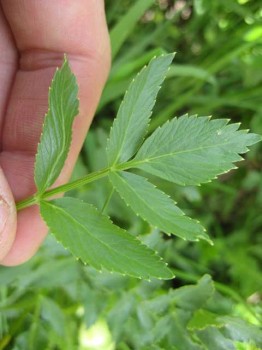
Collecting Angelica in Late August
I started experimenting with angelica earlier this summer but figured I’d give it a few go-rounds before posting about it on account of the whole mistake = deadly poisoning thing.
Now that it’s late August some of flower-stalk-producing plants are starting to go the way of fall here at 11,000 feet in the Colorado high country, although I’m finding that the pattern recognition skills I’ve established with the leaves are coming in handy, as it has become easy for me to spot the first-year plants—without flower stalks or umbels—growing near the older ones, allowing me to collect fresh green leaves and leaf stalks of these non-flowering plants.
For a More Complex Bathtub Gin Try…
Since angelica is a botanical used in some gins, and since I am a new fan of the beverage now that I can make my own by flavoring vodka with wild ingredients, I decided to make a more complex batch than my original juniper and coriander experiment. This time I added angelica leaves and leaf stalks along with the aforementioned ingredients, let it sit out of the sun for a week, and voila—more freshly-flavored gin to enjoy.
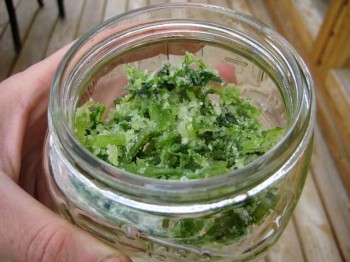
Angelica Leaf Candy Clusters
I also tried making candied angelica leaf stalks using the Krockmals’ recipe, boiling them until slightly soft, covering them in sugar, and then letting it stand overnight before boiling off the sugar water. The angelica candy sticks have a great spicy-sweet flavor.
The last time I made them, however, I had a few extra leaves left over from gin-making, so I threw them in the pot. “Are you supposed to do that?” Gregg asked. “Is it in the recipe?” It wasn’t, but I have to say—I like the angelica leaf “candy clusters” even better than I did the stalks. I can’t get enough of them. Go figure.
Updated 2.26.21
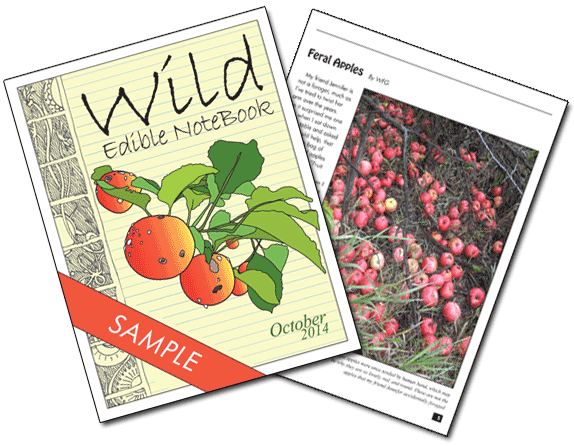
I did a plant walk with a loca herbalist a few years ago. We found Angelica, much to her surprise at this location. She stressed to us that we must be sure there was NO water hemlock in the area as they can cross pollinate. Do you have any knowledge of this?
Gosh, I don’t have knowledge of angelica and water hemlock cross-pollinating, but I personally am not concerned with water hemlock somehow making angelica poisonous. The high country angelica species are unlikely to be found in the same habitat, but maybe the giant angelica (Angelica ampla) could be.